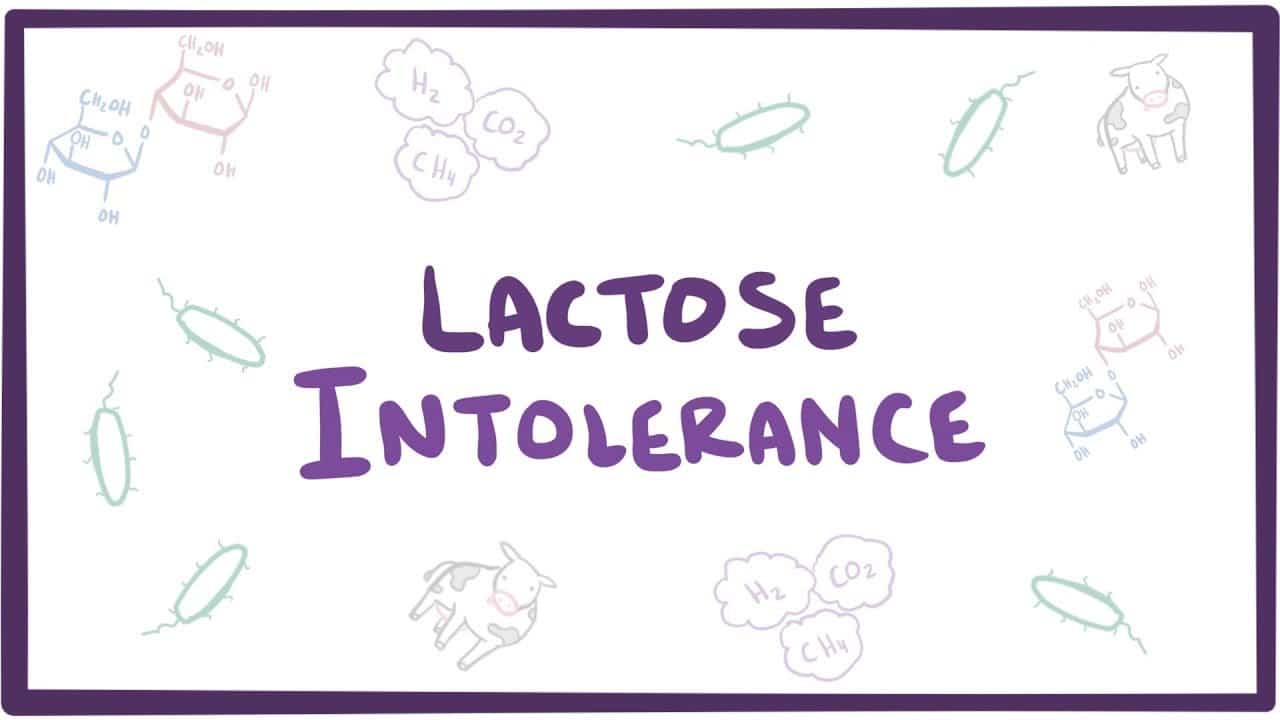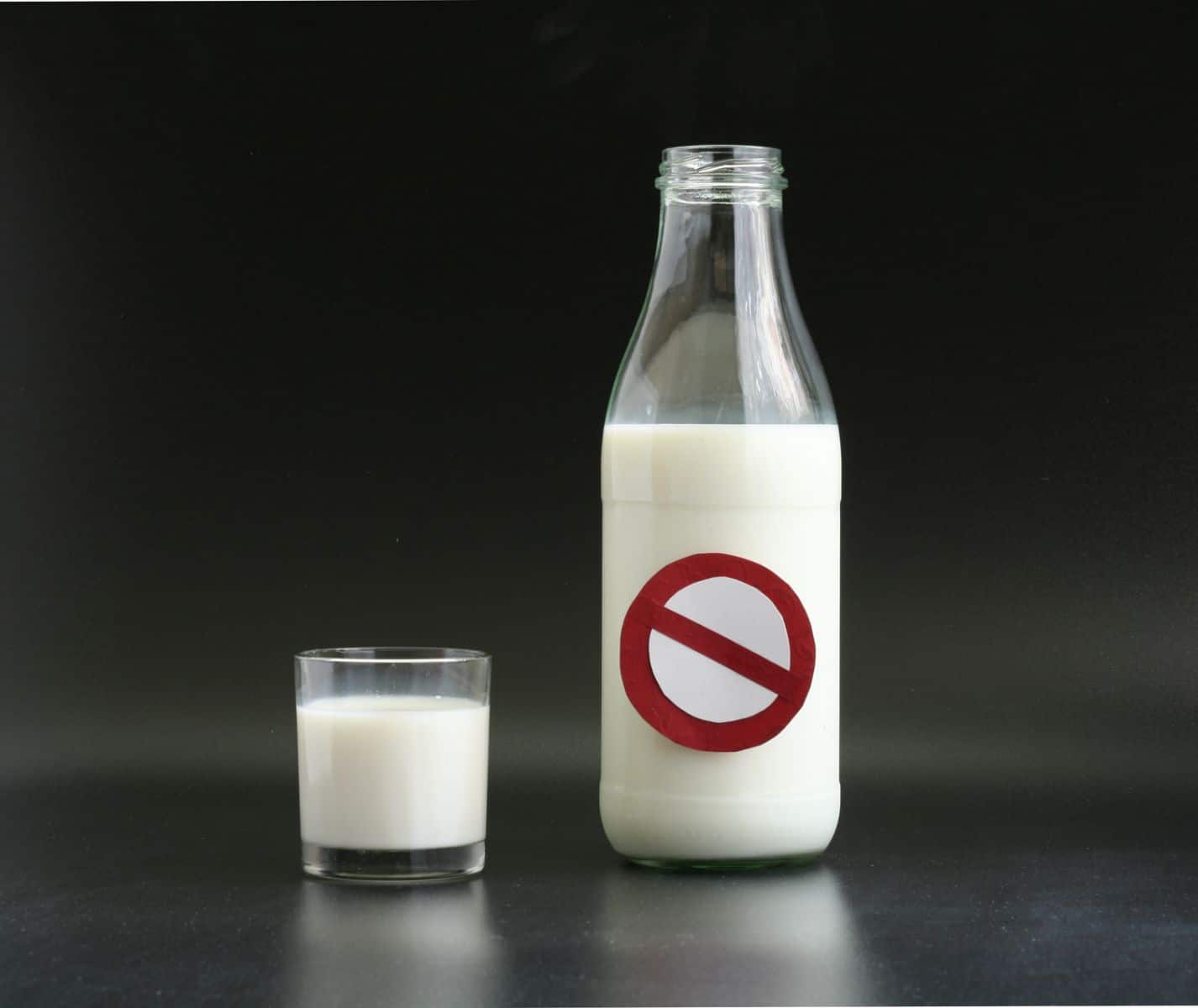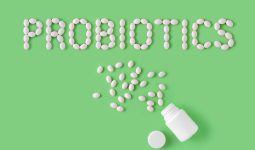Lactose intolerance is a condition characterized by the inability to digest lactose (the sugar present in milk) properly.
This condition causes frequent bloating, diarrhea, flatulence, and other discomforts after taking dairy or dairy products.
This condition is also known as lactose malabsorption. Most people claim it is harmless, well, this post will help you know if this is harmless.
The symptoms produced by this condition are highly discomforting.
Types of Lactose Intolerance
There are three main types of lactose intolerance and they are caused by different factors.
Primary lactose intolerance
This is the most common type. People with this type could digest lactose in the past but suddenly are unable to that again. Even infant, who get their nutrients through milk start developing this type of lactose intolerance when they start growing up.
Most humans become lactose intolerant at the age of six. It is believed that as they start growing up, the amount of lactase produced drastically drops.
The production of lactase falls sharply by adulthood. This will make it difficult for your body to digest milk or milk products.
Secondary lactose intolerance
This type occurs after an illness, surgery, or injury involving your small intestine. This affects the ability of your small intestine to produce lactose.
Crohn’s disease, celiac disease, bacterial overgrowth, and intestinal infection are some of the diseases that can trigger this type of lactose malabsorption.
And in another way, lactose malabsorption can also trigger these diseases and many more.
Developmental or congenital lactose intolerance
This type is rare but highly possible. Some babies are born with lactose intolerance. They lack lactase right from birth. This is an inherited disorder called autosomal recessive.
The affected child must have gotten the same gene variant from the father and mother. Premature infants can also have lactose intolerance due to insufficient level of lactase.
Causes of Lactose Intolerance
The main cause of lactose intolerance is insufficient production of lactase, an enzyme needed for the digestion of lactose in milk.
People with low lactase can still digest milk without much problems but people with very low or even no lactase at all end up developing the symptoms of lactose intolerance.
The main function of this enzyme lactase is to convert milk sugar (lactose) into two simple sugars glucose and galactose. These simple sugars will be absorbed into your bloodstream through your intestinal lining.
People who are deficient in lactase cannot break down these sugars. So the lactose in their food moves to their colon and remain there. They remain there are ferment and bacteria in the colon mix with it.
This leads to the symptoms of lactose intolerance and other problems it causes over time.
Some people can manage the symptoms without giving up milk and dairy products but in the future, you would pay dearly. And some have to give up milk and dairy products because they can’t bear the symptoms.
Symptoms of Lactose Intolerance
Common signs and symptoms of lactose intolerance are:
- Gas
- Headaches
- Bloating
- Fatigue
- Stomach rumblings
- Loss of concentration
- Stomach pains and cramps
- Joint and muscle pains
- Nausea and vomiting (sometimes)
- Mouth ulcers
- Diarrhea (caused by undigested lactose. Your body sends water to your colon to move the fermented lactose).
- Eczema
- Feeling sick
- Urgent bowel movement
- Constipation
- Problems urinating
You will feel these symptoms 30 minutes to 2 hours after taking milk or drinking or eating foods that contain milk.
The Remedy for Lactose Intolerance
The only remedy for lactose intolerance is to quit taking dairy and dairy products. Some common foods apart from milk that contain lactose are:
- Butter
- Yogurt
- Ice cream
- Cheese (both the hard and soft one)
- All type of animal milk (some people think it’s only cow’s milk that cause lactose intolerance).
Foods made with milk that can cause lactose malabsorption are:
- Custards
- Deserts
- Cookies and biscuits
- Sweets and gums and other confectionaries
- Quiche and other foods made with milky sauce
- Chocolates
- Breakfast cereals
- Instant foods like soups and sauces
- Cakes
- Baked goods and breads
- Processed meats e.g. sausages and pre-sliced ham
- Already made meals
- Flavored tortillas, nuts, and potato chips
You also have to check food labels before buying to be sure if it contains lactose or not. On the ingredient list, added milk or dairy products are named:
- Milk
- Curds
- Milk solids
- Milk casein
- Milk powder
- Whey protein
- Whey
- Milk sugar
- Buttermilk
- Milk byproducts
- Cheese
- Whey protein concentrate
- Malted milk
- Sour cream
- Dry milk solids
There is no cure for lactose intolerance and no home remedy because no matter how hard you try, your body won’t be able to digest milk.
And lactose will keep accumulating in your colon, this will cause fermentation and make your colon untidy and a breeding ground for bad bacteria. This, in turn, will increase your risks for serious infections and health complications like leaky gut syndrome.
Some of the health conditions caused by lactose malabsorption are:
- Leaky gut syndrome
- Irritable bowel syndrome
- Malnutrition and nutritional deficiencies
When you stop taking milk or milk products, you will notice these symptoms disappear and your body can now enough time to cleanse your colon.
Is Milk Really Healthy and Good for You?
About 75% of humans are lactose intolerant. Just like other animals in nature, humans do not need milk after the age of 6. That is why majority have lactose intolerance.
We have been programmed to see milk as an essential food that we cannot do without, especially when it comes to bone health. Milk is not a healthy food as we have been made to believe. It is the most common food allergen in the world.
There are many reasons why a health conscious individual should avoid milk and dairy products by all means. One of the reasons is lactose intolerance which we have mentioned above.
The second reason is the extreme processes the milk goes through before you purchase it. The cows are raised in unnatural environment, they are fed genetically modified grains (especially soy beans) instead of grass, the natural diet of cows. And they are injected with high amount of anti-biotics, hormones, and lots of genetically modified substances.
These cows are also fed bone meals. These are powder made from the dead bodies of animals. Some of these animals are killed from diseases like mad cow’s disease and some are even fed chicken dung. There are more outrageous things about bone meals.
Lots of studies have shown that feeding a vegetarian animal with omnivorous or carnivorous diet make them sick. They get diseases like cancers, arthritis, rheumatism, and diabetes.
The unnatural environment these cows are raised in make their cortisol levels so high. Their bodies also produce a lot of antibodies to fight the toxins being injected into them.
All these find their way into the milk they produce. Some of the poisons in cow’s milk are:
- Blood cells: There are about 1.5 million white blood cells per millimeter of commercial milk. This simply means you are drinking the cow’s blood in the milk.
- An actual hormone cocktail: These cows are extremely stressed (their own stress hormone) and others like pituitary, thyroid, hypothalamic, and steroid hormones. A glass of milk has 60 different hormones in it.
Most these hormones are anabolic in nature. These means they make you grow. Not all growth is good especially if it is hastened and makes you grow faster. For instance, we see early maturity in kids, early menstruation in girls and early menopause in women.
Excess growth can also lead to cancer. These hormones will aid the growth of cancer cells. You will even grow big belly and grow in an unhealthy way, in a harmful way.
- Pus: There are at least 322 million cell counts of pus in a glass of milk. This is far above the human limit for pus-intake. This intake of pus has been linked to tuberculosis and Crohn’s disease. The pus comes from mastitis (infected udders) on the cow.
- Gastrointestinal peptides: These include growth inhibitors MAF and MDGI and also nerve and epidermal growth factors. All these affect you in many ways.
- Antibiotics: Commercially-raised cows are constantly in a state of disease and maltreatment. This makes their state of health weak and the constant need for antibiotic injections.
The cows are also rubbed with chemical-laden ointments and creams to treat their chronic infections.
Even the regulating committee test for just 4 antibiotics out of the 85 antibiotics used in treating dairy cows. This means that the other 81 drugs are in your milk and entering your bodies when you consume them.
Studies have shown that about 38% of milk is contaminated is contaminated with antibiotics like sulfa drugs. Another study showed that over half of the milk in the market is filled with little amounts of pharmaceutical drugs.
Despite all these revelations, nothing has been done to control this.
- Recombinant Bovine Growth Hormone (rBGH): This is a genetically engineered synthetic growth hormone given to cows. When in your body, they trigger cancers of the breast, blood, prostate, and colon.
This hormone makes the cows produce 20% more milk than usual. But it also makes the cows to produce insulin-like growth factor 1 (IGF-1). This definitely ends up in the milk and affects you.
This IGF-1 has been linked to breast cancers, it makes the cancer aggressive and help it spread to distant organs.
- The way the cows are raised: Dairy cows are raised in an unnatural environment. They are raised in confined spaces which make it difficult for them to grow and develop healthily.
Also, the artificial hormones, over-milking, chronic infections, and medications all affect the health of the cows.
The udders of these cows become chronically infected and inflamed. This will change the taste and colour of the milk. Over time, the chronic bacterial infection will cause harm to the cow’s mammary gland and make the milk produced unhealthy.
All kinds of pathogens are in the milk produced, from parasitic worms to cancerous tumors (fungi). These diseases are not only passed on into the milk you drink but also into the next generation of cows.
Apart from these, the rigorous milking sessions and regimes increase the stress levels of these cows. They live in a permanent state of sympathetic response. They are loaded with adrenalin.
When you drink this milk, you are exposed to the millions of stress-response cells in the milk of the cows. This is the reason why we are chronically stressed in the society today.
Another revelation from many studies is that milk does not even build strong bones. Rather it makes the body acidic and in order to balance this, the body draws out calcium from the bones and other alkalizing minerals to bring balance to the pH of your body.
Most studies have failed to show the link between dairy intake and broken bones or fractures. Many studies have shown that milk and dairy products do not prevent stress fractures.
A study discovered that the more milk men consumed as teenager, the higher their risks of fractures. Excess animal proteins also draw out calcium from your bones. Cow’s milk increases your risks of osteoporosis.
It also causes eczema and acne. Milk is only a perfect food for calves and not humans. Casein is a very allergenic protein found in milk and it causes a lot of health problems.
It causes inflammation, type I diabetes, and even autoimmune diseases. This casein is used in making many processed foods and it comes from modern hybridized cows raised in an unhealthy way.
Another concern with milk is it is filled with saturated fat. This is a leading cause of Alzheimer’s disease, type II diabetes, cancers, and heart disease.
The hormones in milk promote hormone-dependent cancers. There are considerable amounts of female sex hormones in milk. Excess estrogen in men can cause cancers and other health problems. The saturated fats clog your arteries. Even cheese is 70% saturated fats.
Another issue is contaminants present in milk. There are lots of pesticide residues in cow’s milk and other types of commercial milk. Pasteurization destroys probiotics in the milk, these prevent bad bacteria from growing in the milk.
Without these probiotics, the milk will go bad and bad bacteria can flourish in them. This is why there was salmonella outbreak in Illinois in 1985 and 14,000 people were affected. And it was pasteurized milk they drank.
The heating process during pasteurization destroys fragile nutrients in the milk like vitamins. Over 50% of vitamin C is lost, vitamin B12 is totally destroyed, and other vitamins are lost like up to 80%.
In my chemistry class in my school days, we were taught that if you want to change a chemical compound, treat it with heat. This is what makes pasteurized milk worse.
The heat changes the chemical structure of the milk and makes it highly acidic.
Milk also has enzymes but pasteurization destroys all of them. This is why they add synthetic vitamin D2, but unlike the natural vitamin D, this synthetic one causes heart disease.
Due to the absence of enzymes, much strain is put on the digestive system and lactose intolerance occurs. This leads to buildup of toxins inside the intestines and nutrient malabsorption leading to nutritional deficiencies.
The cows producing this milk are even hybrid cows. They produce more milk than the average cows like 3 to 4 times more. They also have overactive pituitary glands which lead to an excessive production of growth hormones.
Even if you go for skimmed milk, all the toxins from the cows and the drugs and antioxidants are still present in the milk.
These are some of the reasons why you should avoid milk. Humans are the only creatures on earth that take milk in their adulthood and another species’ milk for that matter.
If it is not your mum, then it is not your milk. Someone said if we were meant to take milk, we would come out of our mother’s womb crying moooo.
Lol, people can be mean but sometimes you have to be mean when saying the truth. Well, if you are not ready to give up milk yet, there are alternatives and some remedies that you can employ.
Healthy Alternatives to Milk
If you are bothered about getting in enough calcium, there are other sources of calcium. All green leafy vegetables are rich in calcium, magnesium, and other minerals needed for optimum bone and teeth health.
You can take them raw in the form of green smoothies or you add them to your meals by cooking them slightly. The highest concentration of calcium in nature is found in marine plants and sesame seeds.
Calcium need magnesium to work properly and you can find these two in dark green leafy vegetables and fruits. Leafy greens are store houses of magnesium, calcium, and flavonoids.
Cow milk is higher in calcium than in magnesium. Other plant sources of calcium exist and their drinks can even be taken in place of milk.
Some of them are:
- Rice milk
- Oat milk
- Almond milk
- Coconut milk
- Hemp milk
- Potato milk
- Quinoa milk
- Hazelnut milk
- Soy milk (must be non-GM soy and it must have been fermented first)
Note that plants do not produce milk but these are lay man’s terms in referring to the liquid extracts from plants. They are best called “beverages” and not milk.
But I Don’t Want to Give Up Milk, What Do I Do?
Well, I have come across a lot of people who are not willing to give up dairy for anything in this world including their health. There are still ways around but know that these are not that effective like quitting dairy totally.
They just help suppress the symptoms and their effectiveness also depends on the state of your gut. This is why they work for some people and don’t work for others.
Go for organic milk
Raw milk gotten from grass-fed animals who are allowed to roam freely, are not fed antibiotics, growth hormones, they are disease free, and free from pesticides is better than man-raised milk.
There are some studies supporting the health benefits of raw organic milk. There have fewer side effects when compared to conventional cow milk.
Some people respond positively from drinking raw organic milk while some don’t. Many still report lactose intolerance from drinking raw milk. In this case, your body just can’t tolerate milk, don’t force it, listen to your body and avoid milk.
You can live without milk.
Lactase supplements
You can get these from a good health shop. They are available in the form of tablets or drops. You add the drops to your foods and drinks or you swallow the tablets.
This is not effective for everyone. I have already given the reason above. You can take from 20 to 50 grams.
Pre and pro-biotics
These are supplements that help your gut by increasing the number of beneficial bacteria. Prebiotics serve as food for the beneficial bacteria (probiotics).
These will help them to thrive when in your gut. These supplements can reduce the symptoms of lactose malabsorption but they can’t stop it from occurring.
Although some people still complain of the symptoms even while taking these supplements. If you want to try this supplement, I will advise you go for Bifidobacteria. It is one of the most effective probiotics.
Lactose exposure
This therapy is based on the belief that regularly including lactose in your diet even if you are intolerant to it will make your body adjust to it.
There are few positive results so far but a lot of people don’t get help with this.
Sources;
- Lactose intolerance; NCBI, NCBI, NCBI, NCBI, NCBI, NCBI, BMC, WOL
- Lactose malabsorption complications; NCBI, NCBI, NCBI, IC, NCBI, NCBI, NCBI,
- Management of Lactose malabsorption; NCBI, NCBI,
- Non-milk sources of calcium; NCBI, WHF, PCRM, Harvard, WV, Harvard, Harvard, PCRM,
- Symptoms of lactose intolerance; NCBI, TL, Karger, NCBI, NCBI, NCBI, NCBI, NCBI, NCBI,
- Enzyme therapy; NCBI, NCBI, NCBI,
- Lactose exposure; NCBI, NCBI, NCBI, NCBI,
- Probiotics; NCBI, NCBI, NCBI, NCBI, NCBI, NCBI, NCBI,
- Milk allergy; NCBI,
- Milk and Health problems; NCBI, PCRM, PDF, NN, WOL, TG, Harvard, NCBI, ACS, NCBI, PCRM, PDF, Forbes, SI, CNS, PETA, Harvard, NCBI, NCBI, GJ, PCRM, PCRM, DH, GH,
- The dairy industry acts; PETA, MJ, SD, NYT, WV, AD, TC,
- Contaminants in milk; NCBI, CDC, Pus,
- Benefits of raw milk; RM, RMF, GL,











